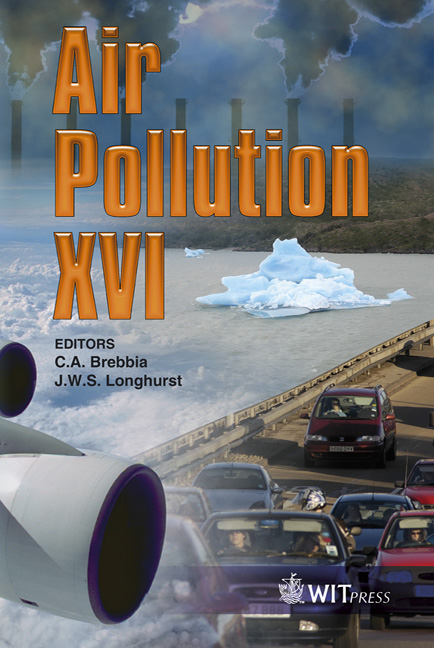Monitoring Of Trace Organic Air Pollutants – A Developing Country Perspective
Price
Free (open access)
Transaction
Volume
116
Pages
11
Page Range
345 - 355
Published
2008
Size
317 kb
Paper DOI
10.2495/AIR080351
Copyright
WIT Press
Author(s)
P. B. C. Forbes & E. R. Rohwer
Abstract
Air pollutants arise both from natural sources and from various anthropogenic activities, and are of concern due to their environmental impacts, including human health effects. In developing countries, atmospheric monitoring has largely focused on inorganic pollutants, such as sulphur dioxide, nitrogen oxides and ozone. Organic air pollutants, however, are monitored infrequently, because of factors such as the cost of equipment required; necessary expertise of monitoring personnel; and the trace levels at which such pollutants are usually present in the atmosphere. This is of concern since organic air pollutants, such as polycyclic aromatic hydrocarbons (PAHs) and dioxins, are emitted from combustion processes, which are often employed for domestic heating and cooking purposes in developing countries. This paper focuses on the current status of organic air pollutant monitoring in southern Africa, and discusses developments in this regard. Screening methods and monitoring of indicator compounds, which allow for more widespread sampling and analysis of samples for spatial and temporal trend determinations, are discussed. A laser induced fluorescence (LIF) technique, for example, has been developed by the authors, based on sampling onto a novel silicone rubber trap. This will allow for the rapid screening of air samples for the presence of PAHs, prior to comprehensive, quantitative analysis of samples of interest by gas chromatography-mass spectrometry (GC-MS) (particularly those with PAH levels above background concentrations). LIF provides sufficient selectivity for a screening procedure, without the need for sample clean-up and separation processes prior to analysis. The technique also lends itself to real-time monitoring and \“chemical fingerprinting” via the fluorescence spectra obtained. Keywords: trace organic air pollutants, developing countries, combustion emissions, polycyclic aromatic hydrocarbons, dioxins, laser induced fluorescence.
Keywords
trace organic air pollutants, developing countries, combustionemissions, polycyclic aromatic hydrocarbons, dioxins, laser induced fluorescence.





